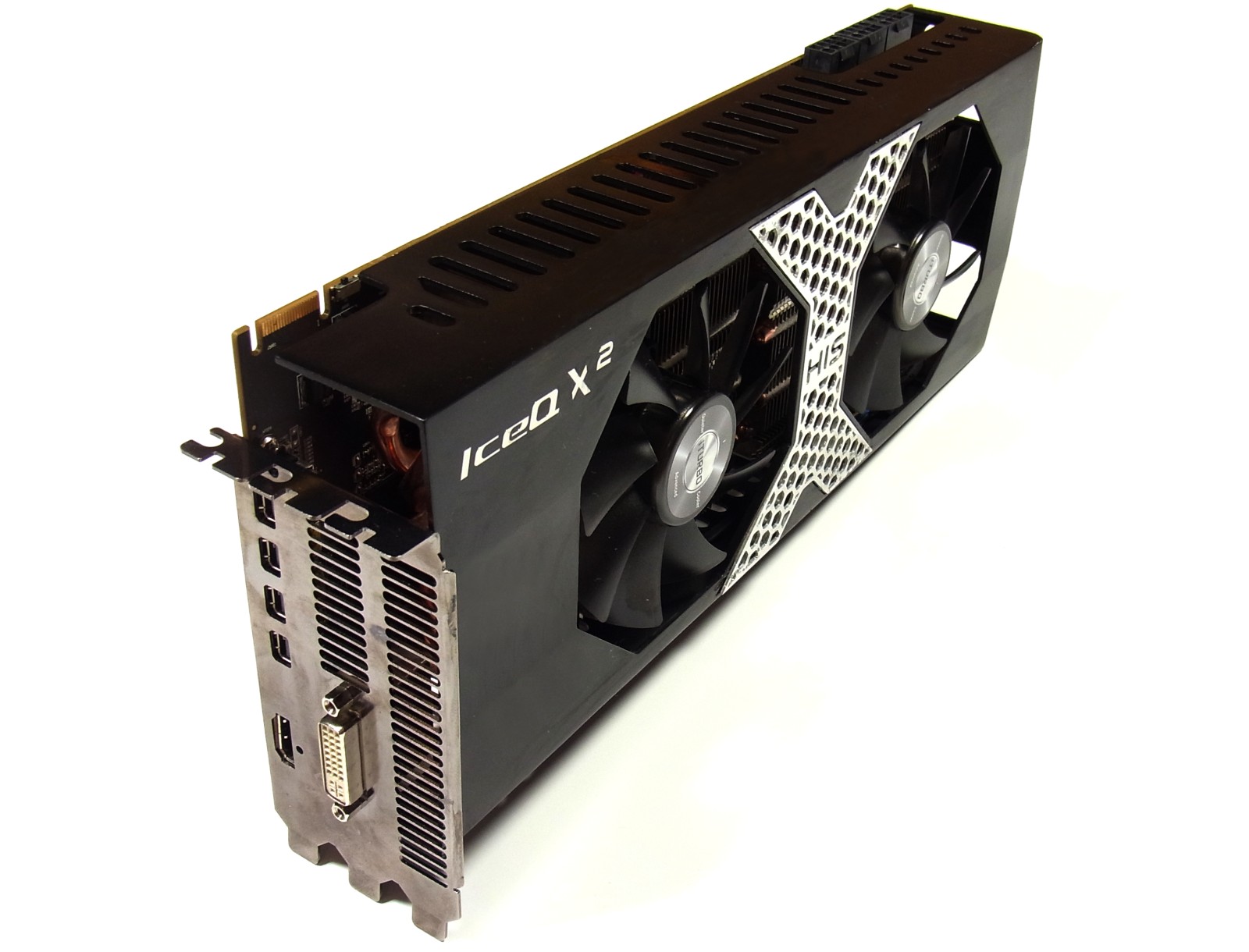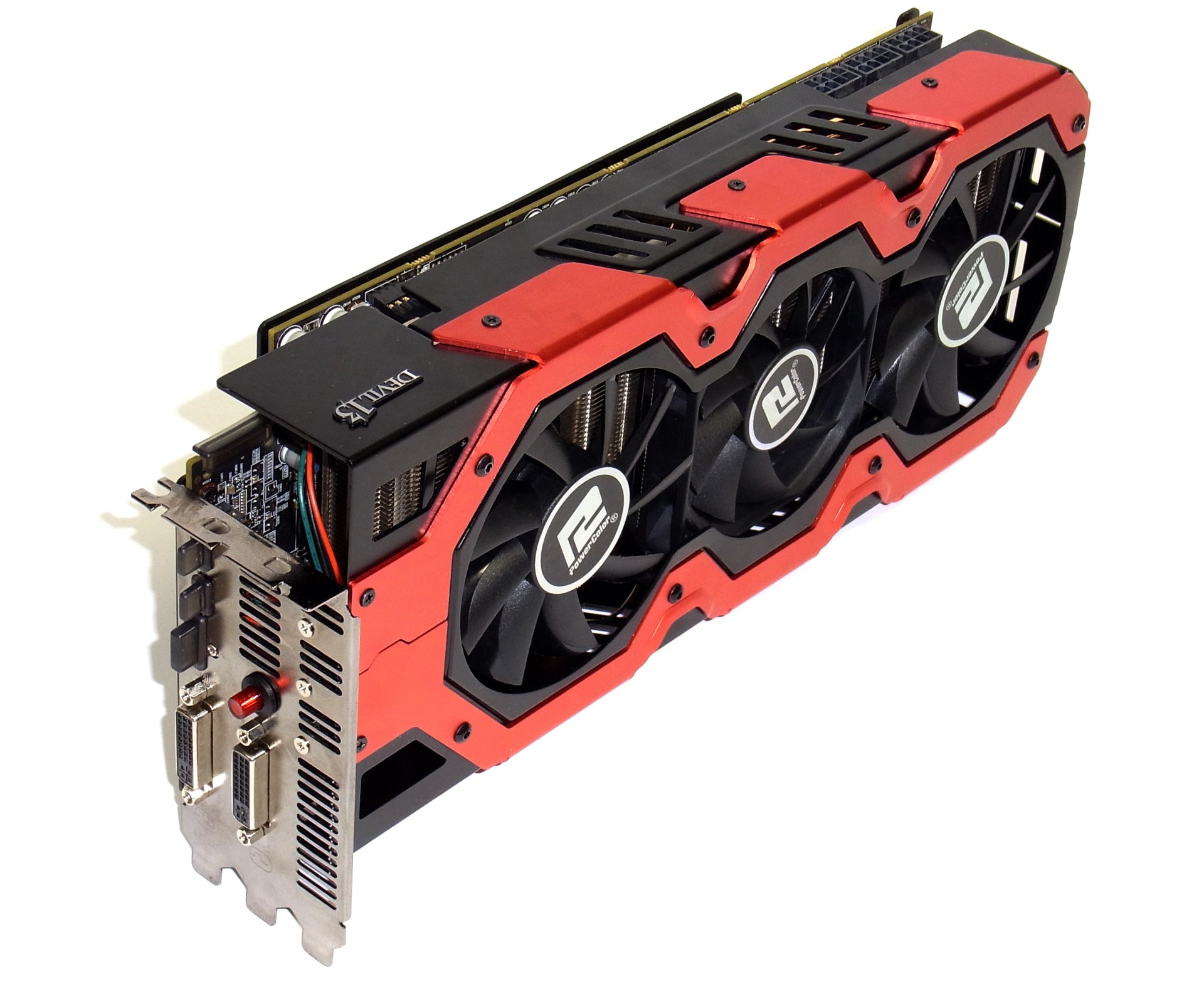Radeon HD 7990 And GeForce GTX 690: Bring Out The Big Guns
EVGA recently lent our German lab one of the GeForce GTX 690s we've had in the U.S. for months. The purpose? To pit against HIS' upcoming 7970 X2 and PowerColor's Devil13 HD7990, both dual-Tahiti boards vying to become the world's fastest graphics card.
Just Because You're Fastest Doesn't Make You The Best
Performance Winner: HIS 7970 X2
On paper, HIS' 7970 X2 looks like it should outperform the other two contenders. Indeed, its elevated core and memory clock rates help the board dominate our benchmarks. In almost every test, it's the fastest card in this round-up.
Granted, AMD's CrossFire profile for Battlefield 3 doesn’t work very well, and the company's beta Catalyst 12.11 driver accelerates performance in some (but not all) games. Even still, this card enjoys the benefit of being the fastest we've tested, matching or besting two Radeon HD 7970s in CrossFire.
What it doesn't enjoy is availability. We aren't sure when it'll show up on store shelves. And when it does, we don't know how much it will cost. Consequently, HIS' win is largely symbolic in this battle of dual-GPU behemoths.
The King of Eye Candy: PowerColor Devil13 HD7990
PowerColor gives its dual-Tahiti-based card the much-anticipated 7990 model designator, even though AMD still hasn't launched a reference design of its own. With an easily-accessible overclocked BIOS and AMD's new beta Catalyst 12.11 drivers, the board manages to edge out EVGA's GeForce GTX 690 in a number of the performance measurements.
A generous accessory bundle, very exclusive-looking packaging, and aggressive looks make this card a collector's item. Aftermarket water cooling would even be nifty for a card like this. Unfortunately, a limited run makes it unlikely that we'll ever see blocks designed for the Devil13's GPUs.
Get Tom's Hardware's best news and in-depth reviews, straight to your inbox.
Thanks to a head start, PowerColor's flagship board actually does show up on Newegg for $1000 (even though it's out of stock as of this writing). We're most bothered, however, by the coil whine that is audible on two separate samples we received under most forms of load.
Efficiency Winner: EVGA GeForce GTX 690
Both cards based on AMD's highest-end GPUs draw power like there is no tomorrow (or at least like you won't have a bill to pay at the end of the month). They even manage to blow past the theoretical 525 W limit defined by the PCI-SIG electromechanical specification for three eight-pin connectors and a 16-lane slot.
EVGA's GeForce GTX 690 draws a lot less power, and what it does consume it uses more efficiently. The card only takes up two slots. Plus, it's the quietest board in our round-up.
Because it launched first, EVGA's competition knew what bar they'd have to hit in order to outperform the GeForce GTX 690. As a result, this is not necessarily the fastest board in every test, though it still scores first-place finishes in some of them. The elegance with which it does its job, though, is appreciated after benchmarking the big, power-hungry Tahiti-based competition.
EVGA's three-year warranty is something to consider, too (compared to PowerColor's two-year coverage and HIS' presumed two-year guarantee).
Finally, we cannot ignore availability. Although GeForce GTX 690s were hard to find when they first launched, EVGA's offering currently goes for $1000 if you want one right now. And from what we saw over the previous 18 pages, if we were spending $1000 on a graphics card, this would be the one to buy.
Final Thoughts
None of the three cards in today's comparison dominates the competition completely. The best-performing model depends on what you're looking to do. AMD's new Catalyst 12.11 beta driver shows us that, even after running all of the benchmarks, we can still be surprised by how a GPU performs even months after its introduction. Moreover, we can never be 100% sure that one board or another will always have an advantage in a specific application.
Even though we like AMD's performance numbers post-Catalyst 12.11, we don't really like how the company got there. It might have taken the crown with its brute force, power-hungry approach, but we would have preferred a little finesse.
Current page: Just Because You're Fastest Doesn't Make You The Best
Prev Page Noise Comparison Videos: Full Load
Igor Wallossek wrote a wide variety of hardware articles for Tom's Hardware, with a strong focus on technical analysis and in-depth reviews. His contributions have spanned a broad spectrum of PC components, including GPUs, CPUs, workstations, and PC builds. His insightful articles provide readers with detailed knowledge to make informed decisions in the ever-evolving tech landscape
-
mayankleoboy1 IMHO, the GTX690 looks best. There is something really alluring about shiny white metallic shine and the fine metal mesh. Along with the fluorescent green branding.Reply
Maybe i am too much of a retro SF buff :) -
Ironslice What's the most impressive is that the GTX 690 was made by nVidia themselves and not an OEM. Very nice and balanced card.Reply -
thanks for the in depth analysis with adaptive V-sync and radeon pro helping with micro stutter.Reply
not to take away anything for the hard work performed; i would have liked have seen nvidia's latest beta driver, 310.33, included also to see if nvidia is doing anything to improve the performance of their card instead of just adding 3d vision, AO, and sli profiles. -
RazorBurn AMD's Dual GPU at 500+ Watts of electricity is out for me.. Too Much Power and Noise..Reply -
mohit9206 2 670's in sli is better than spending on a 690 and 2 7950's in Xfire is better than spending on a 7990. this way you save nearly $300 both waysReply


